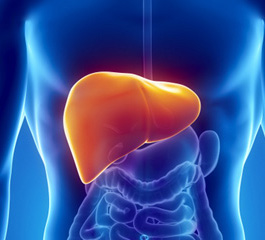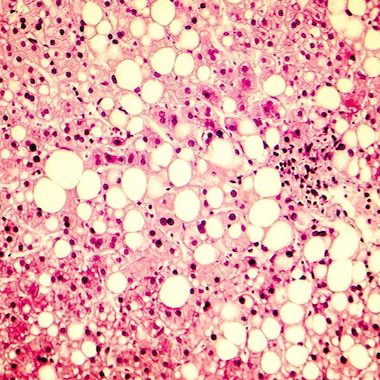Population Science and Cancer Control
31 members across eight departments in UTSW Medical School and three departments in the Peter O’Donnell Jr. School of Public Health
The Population Science and Cancer Control (PS) Program’s overall goal is to conduct interactive, interdisciplinary research leading to discoveries that reduce the cancer burden in the Simmons Comprehensive Cancer Center (SCCC) catchment area in North Texas and beyond.
The PS Program’s three specific aims are to: Identify and evaluate predictive markers for cancer risk, early detection, progression, and treatment response; Identify multi-level factors associated with cancer prevention, early detection, care delivery, and outcomes, including survivorship; and Develop and test interventions to improve evidence-based cancer prevention and control, with a focus on underserved populations and safety-net healthcare systems.
Identify and Evaluate Biomarkers to Assess Cancer Risk, Detect it Early, Predict Progression, and Treatment Response
Amit Singal, M.D., and an inter-programmatic team of investigators, including Yujin Hoshida, M.D., Ph.D., compared biomarkers predictive of liver cancer risk and incidence among patients with cirrhosis. They identified a serum protein-based biomarker (PLSec) that stratifies patients into high and low risk for developing liver cancer and tracks changes in risk over time, such as reductions after hepatitis C treatment. For early tumor detection, Singal’s team compared a multitarget blood test (mt-HBT) with ultrasound-based surveillance and found mt-HBT detected more HCC cases than no surveillance, ultrasound alone, or ultrasound plus serum alpha-fetoprotein. Specifically, mt-HBT detected 45% of HCCs compared to 38% by ultrasound alone, representing 1,680 additional early-stage cases detected per 100,000 patients. Compared to ultrasound plus AFP, mt-HBT detected 350 more cases, translating to an additional 5,720 and 1,000 life years gained, respectively.
Molecular signatures of long-term hepatocellular carcinoma risk in non-alcoholic fatty liver disease
For early tumor detection, Amit Singal’s, M.D., team compared a multitarget blood test (mt-HBT) with ultrasound-based surveillance and found mt-HBT detected more HCC cases than no surveillance, ultrasound alone, or ultrasound plus serum alpha-fetoprotein. Specifically, mt-HBT detected 45% of HCCs compared to 38% by ultrasound alone, representing 1,680 additional early-stage cases detected per 100,000 patients. Compared to ultrasound plus AFP, mt-HBT detected 350 more cases, translating to an additional 5,720 and 1,000 life years gained, respectively.
Identify Multi-level Factors Associated with Cancer Prevention, Early Detection, Care Delivery and Outcomes, Including Survivorship
Sandi Pruitt, Ph.D., M.P.H., and David Gerber, M.D., continue paradigm-shifting and policy-impacting work linking Surveillance, Epidemiology, and End Results (SEER) Medicare data to prevalence and outcomes of clinical trial enrollees with both prior and new cancer diagnoses. Prior cancer diagnosis has historically triggered exclusion from clinical trials, and the outcome and long-term care needs of these patients may be different from patients without a prior cancer diagnosis. Among 112,769 CRC patients >66 years of age, SEER data showed 14% had a previous cancer. Those with previous cancer had worse overall survival, but improved CRC-specific survival. Further those with a previous melanoma and stage IV CRC had equivalent survival to those without previous cancer. In 2023, the team published findings from an expanded dataset with 10 years of linked SEER-Medicare data across multiple cancers, showing a ~15% increase in number of survivors diagnosed with a new cancer over six years, as well as some disparities in second diagnoses by race and ethnicity. Based on these findings, the FDA now advises patients with prior or concurrent malignancies whose natural history or treatment does not have potential to interfere with the safety or efficacy assessment of the investigational drug should generally be eligible for enrollment in clinical trials.
Develop and Test Interventions to Improve Evidence-Based Cancer Prevention and Control, with a Focus on Underserved Populations and Safety-Net Health Care Systems
Identified most effective interventions for CRC screening in large safety-net system
Rasmi Nair, Ph.D., M.P.H., M.B.B.S., and Celette Sugg Skinner, Ph.D., M.A., studied a long-term cohort at Parkland Health to assess up-to-date CRC screening associated with the various in- and out-reach strategies implemented in the system over the decade. The sample included 32K-40K patients each year; race/ethnicity ranged from 37-49% Hispanic and 35-39% Black. Findings showed low-intensity interventions (i.e., EHR reminders) increased rates only 2-3%, whereas system-wide mailed FIT increased rates 51- 65% per year.
Celette Sugg Skinner, Ph.D., M.A., and Amit Singal, M.D. assessed the mailed FIT program’s cost effectiveness and detection of advanced neoplasia, compared with invitations for colonoscopy and with usual care. The analyses ran microsimulation models using 10-year data to account for differences in test intervals, repeat-testing adherence, and cost. Findings showed both mailed FIT and colonoscopy invitations were more cost-effective over the longer-term period than originally reported for the shorter term. Each also improved advanced neoplasm detection over usual care (i.e., no mailed invitations). Compared to each other, mailed FITs were less expensive but resulted in fewer months of screening adherence and lower detection of advanced cancers. These findings provide important information to guide cancer screening policy at low-resourced safety-net systems and have confirmed Parkland’s “FIT-first” strategy.
Notable Publications
Fujiwara, N. et al. A blood-based prognostic liver secretome signature and long-term hepatocellular carcinoma risk in advanced liver fibrosis. Med 2021; 2: 836-50.e10. PMCID: PMC8312635.
Fujiwara, N. et al. Molecular signatures of long-term hepatocellular carcinoma risk in nonalcoholic fatty liver disease. Sci Transl Med 2022; 14: eabo4474. PMCID: PMC9236162.
Murphy, C.C. et al. An Updated Report on the Prevalence of Prior Cancer Among Persons Newly Diagnosed With Cancer in the Surveillance, Epidemiology, and End Results Program. JAMA Oncol 2023; 9: 1147-50. PMCID: PMC10273127.
Halm, E.A. et al. Improving Colorectal Cancer Screening in a Regional Safety-Net Health System over a 10-Year Period: Lessons for Population Health. J Gen Intern Med 2024; 39: 978-84. PMCID: PMC11074086.
Kapinos, K.A. et al. Cost Effectiveness of Mailed Outreach Programs for Colorectal Cancer Screening: Analysis of a Pragmatic, Randomized Trial. Clin Gastroenterol Hepatol 2022; 20: 2383-92.e4. PMCID: PMC9357235.
Leadership and Contact

Associate Professor, Peter O'Donnell Jr. School of Public Health

Celette Sugg Skinner, Ph.D., M.A.
Professor, Peter O'Donnell Jr. School of Public Health






